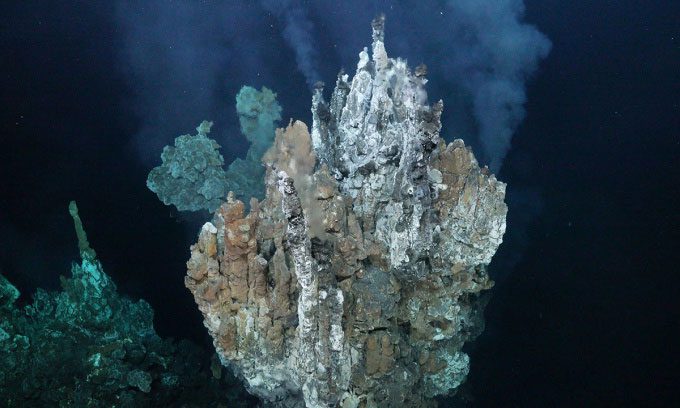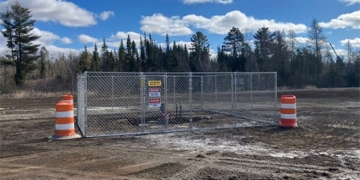Newly Discovered Site Features Hydrothermal Vents Up to 10 – 15m High, Home to Diverse Animal Species.
During a 30-day ocean expedition, researchers aboard the Falkor (too) research vessel discovered an area spanning 600 meters that contains hydrothermal vents reaching heights comparable to a four-story building, located near the Galápagos Islands, Ecuador, as reported by Live Science on December 1. This hydrothermal vent field is situated at the western edge of the underwater volcano Los Huellos East, according to the Schmidt Ocean Institute.

Scientists discovered clusters of hydrothermal vents as tall as a four-story building on the ocean floor. (Photo: ROV SuBastian/Schmidt Ocean Institute)
Utilizing two high-resolution tools, the research team meticulously mapped the newly discovered field with astonishing detail. This area features numerous hydrothermal vent clusters that rise 10 – 15 meters above the ocean floor, releasing hot fluids. The surrounding seabed is teeming with life, including 15 species previously unseen in such a habitat. Among these is the Monoplacophoran, a small mollusk resembling a starfish that has remained nearly unchanged throughout its evolutionary history.
“These incredibly detailed maps were created using the most advanced technology. The area depicted by the maps and the complexity of the seabed they reveal are truly remarkable,” stated Jyotika Virmani, Executive Director of the Schmidt Ocean Institute.
During the expedition, the Falkor (too) also revisited a “nursery” of Pacific white skates (Bathyraja spinosissima) located in the hydrothermal vent field discovered near the Galápagos in 2018. This is one of only two confirmed locations on Earth known to be breeding grounds for this species. The second site was discovered in July 2023 off the coast of Canada, estimated to contain up to one million skate eggs.
Additionally, the research team returned to the first hydrothermal vent field ever discovered on Earth, mapped in 1977. This field, named Rose Garden, is located along the Galápagos Rift. The team aboard the Falkor (too) mapped the Rose Garden with a resolution of 3 cm. They also created ultrasonic images (technology that converts sound into visual representations), helping to understand how hydrothermal activity changes over time.




















































